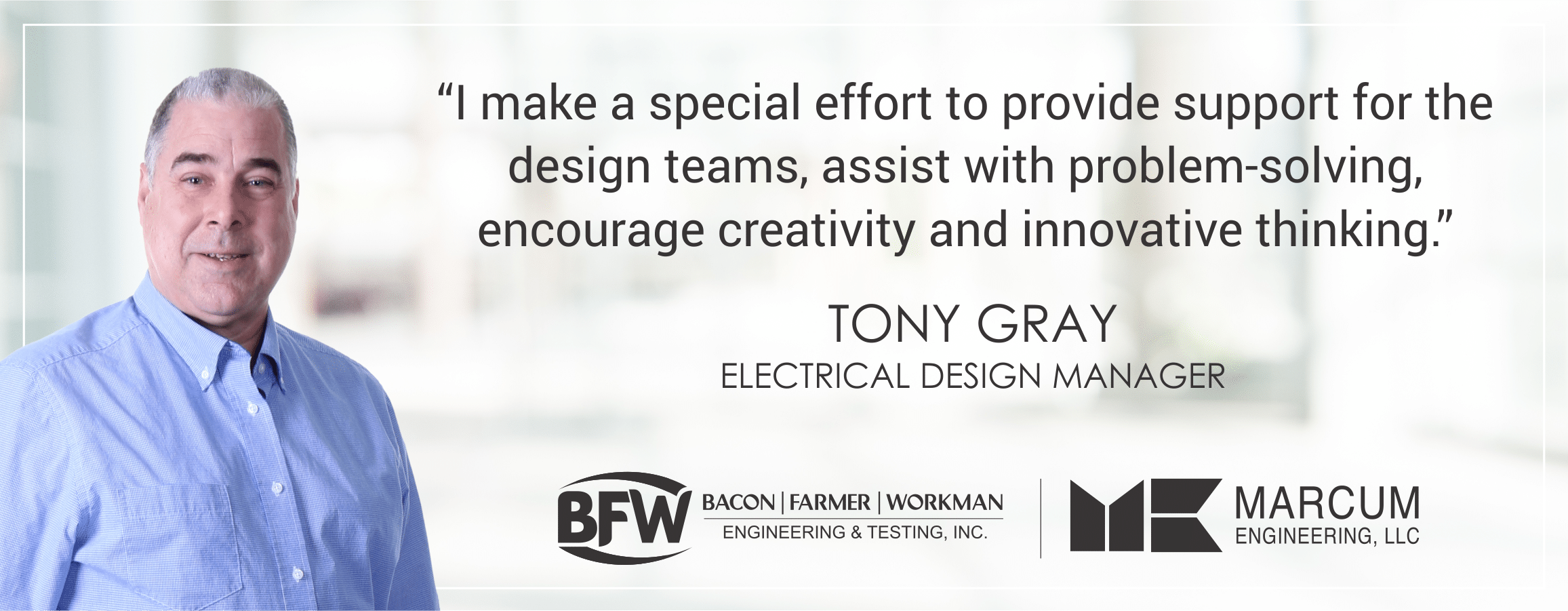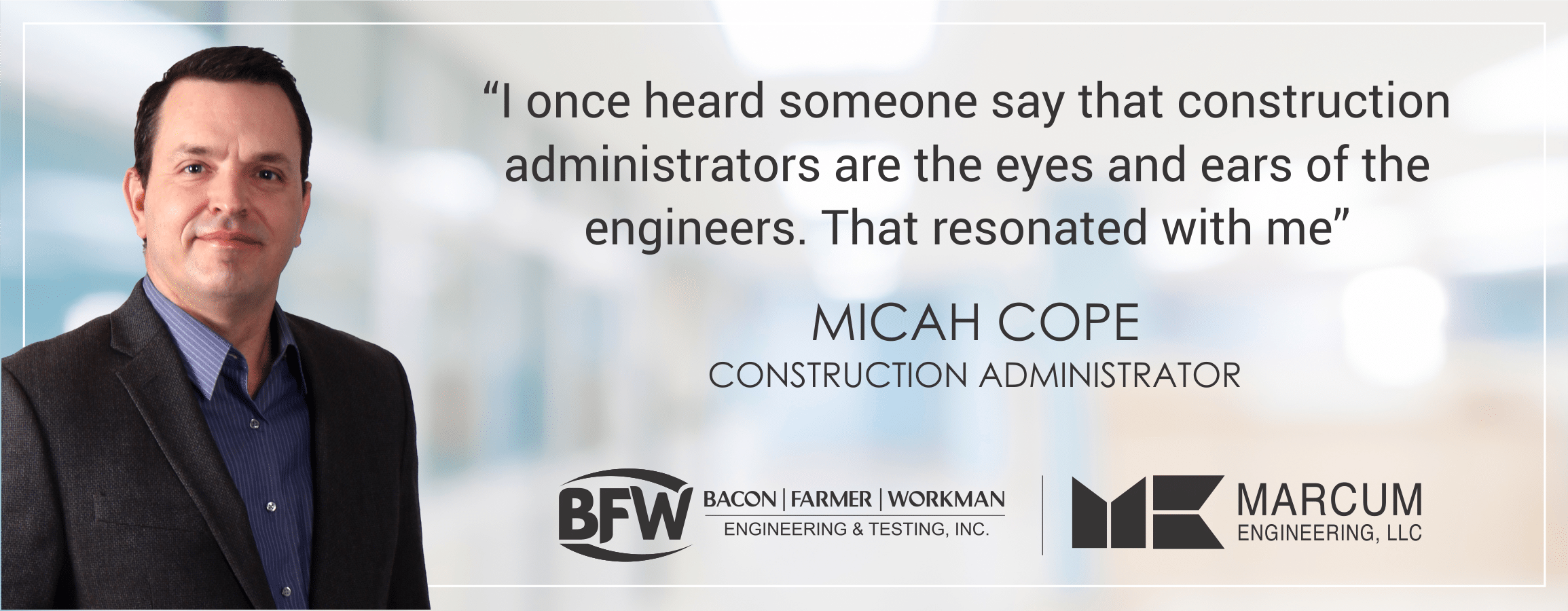How We Craft a Mechanical & Electrical Plan at BFW/Marcum
The People Behind the Plan
We thought we’d talk to a few of the engineers and designers behind many of the Mechanical & Electrical systems we’ve designed in the past. We take Mechanical & Electrical a step further and believe engineering administration plays a key role in the success of these systems.
Mechanical (Overall)
Jeff Halverson, Mechanical Engineer/Project Manager
“After years of experience, you see various many different Mechanical & Electrical designs, system options, and installations. As we design buildings, they get more and more complex, which requires us to be creative and think outside the box. When we look back on projects, we see how we can be more efficient or make what were good designs great.”

“As a project manager, we will schematically scope mechanical systems for a project early on. Once we proceed into the design phase, we will collaborate as a team where designers and engineers will provide their thoughts on various items. From there we weigh the pros and cons and determine the best approach to the final design. Many times we will revisit certain aspects of the design based on feedback from architect and clients.”
Mechanical (HVAC)
Todd Noles, Designer, is a man that sees ductwork in his sleep. His designs move the air through many of our buildings. We asked him how he’d describe his expertise within the context of a Mechanical & Electrical system.
“I have been a designer since 1997. I have a background in many different types of construction. I cut my teeth in industrial HVAC design working with companies such as Fuji Film, Frito Lay, and Ag Processing Inc. When I joined Marcum Engineering I learned more about commercial HVAC design.

Todd is one of our best proponents of establishing design standards, here’s what he has to say.
“I have instituted many standards we use in our design process. I teach classes and even create written and video learning materials for our designers. I have been entrusted by the owners and engineers in helping BFW/Marcum move forward technologically. I truly enjoy this part of my responsibilities.”
Electrical
Tony Gray, Electrical Design Manager. We asked him to dive a little into his skillset.
“My electrical expertise has developed from 27 years of commercial design and 5 years of industrial design/construction administration. My role at BFW/Marcum involves the management of departmental electrical design and quality control. I utilize my experiences to strive for principles of continuous improvement and excellence in design.”

“I make a special effort to provide support for the design teams, assist with problem-solving, encourage creativity and innovative thinking. I accomplish this by practicing an open door policy geared toward direct open/closed collaboration as necessary.
This form of communication happens daily and helps to establish team goals and bring those goals to reality. I recognize that each person in the team has different visions, opinions, skills, experiences, and roles – all of which must be taken into consideration to achieve excellence.”
Plumbing
Mike Vaughn, Senior Mechanical Designer, is an artist that finds the most satisfaction when he can hide his work. We asked him to provide some insight into his thought process as a designer.
“At the beginning of each project, I look for the one thing that the architect has incorporated into their floor plan to grab your attention. An example may be a multi-story atrium constructed of glass located directly in the center of a building.
The first question that enters my mind is how to route utilities from one side of the building to the other without exposing them. Challenges such as this require members from each discipline of the Mechanical & Electrical design team to coordinate plumbing pipes, HVAC systems, and electrical conduit through possible soffits or adjacent spaces to maintain the unique element the architect is wanting to achieve.

“Another more practical example of this planning process would be in a mechanical room. Whether the project is a renovation or new construction, the mechanical room is never oversized for all the Mechanical & Electrical equipment to be placed. The Mechanical & Electrical team has to work together when locating large air handling units, electrical switchgear, wall-mounted panels, and domestic water heating equipment so as not to impede on required building code clearances and maintain access for service.
Mechanical & Electrical systems are like giant 3D jigsaw puzzles. Sometimes changes come and we will need to insert one last piece of equipment into that mechanical room. So each member on the team is repositioning their jigsaw pieces to get that last piece to fit. Once everything is re-positioned, you make sure no domestic water piping is routed over electrical equipment and adjust floor drain locations as needed. Finally, when all the pieces seem to fit you check to make sure there is a clear path to all equipment. After all, someone is going to have to replace each item someday.”
Construction Administration
Micah Cope, Construction Administrator, has the pivotal job of maintaining relationships. Engineering is a process, and with that level of complexity comes plenty of opportunities for misunderstanding.
“I once heard someone say that construction administrators are the eyes and ears of the engineers. That resonated with me. As a construction administrator, my job is to ensure the contractor understands the intent of the overall project. I also answer any questions the contractor may have for the engineer and ensure the project is installed per our contract documents. We’re a crucial part of the Mechanical & Electrical plan because we ensure the owner has a quality product in the end.”

We’ll Build That
Mike is quick to point out that there is no project too complicated or too pedestrian (our second and final pun, also intended).
“BFW/Marcum is highly qualified to provide engineering services for designing many forms of transportation infrastructure. We provide conventional surveys, mobile LiDAR survey, hydraulic/hydrologic engineering, traffic engineering, structural engineering, urban and rural roadway design, and bicycle & pedestrian path design.
BFW has designed substantial award-winning transportation projects in Kentucky, Tennessee, Illinois, and Missouri.”
We might win awards, but our focus is on what we build for our community. You might not even notice our work as you drive your car over a bridge we planned. If not, then it’s working by design.

Recent Comments